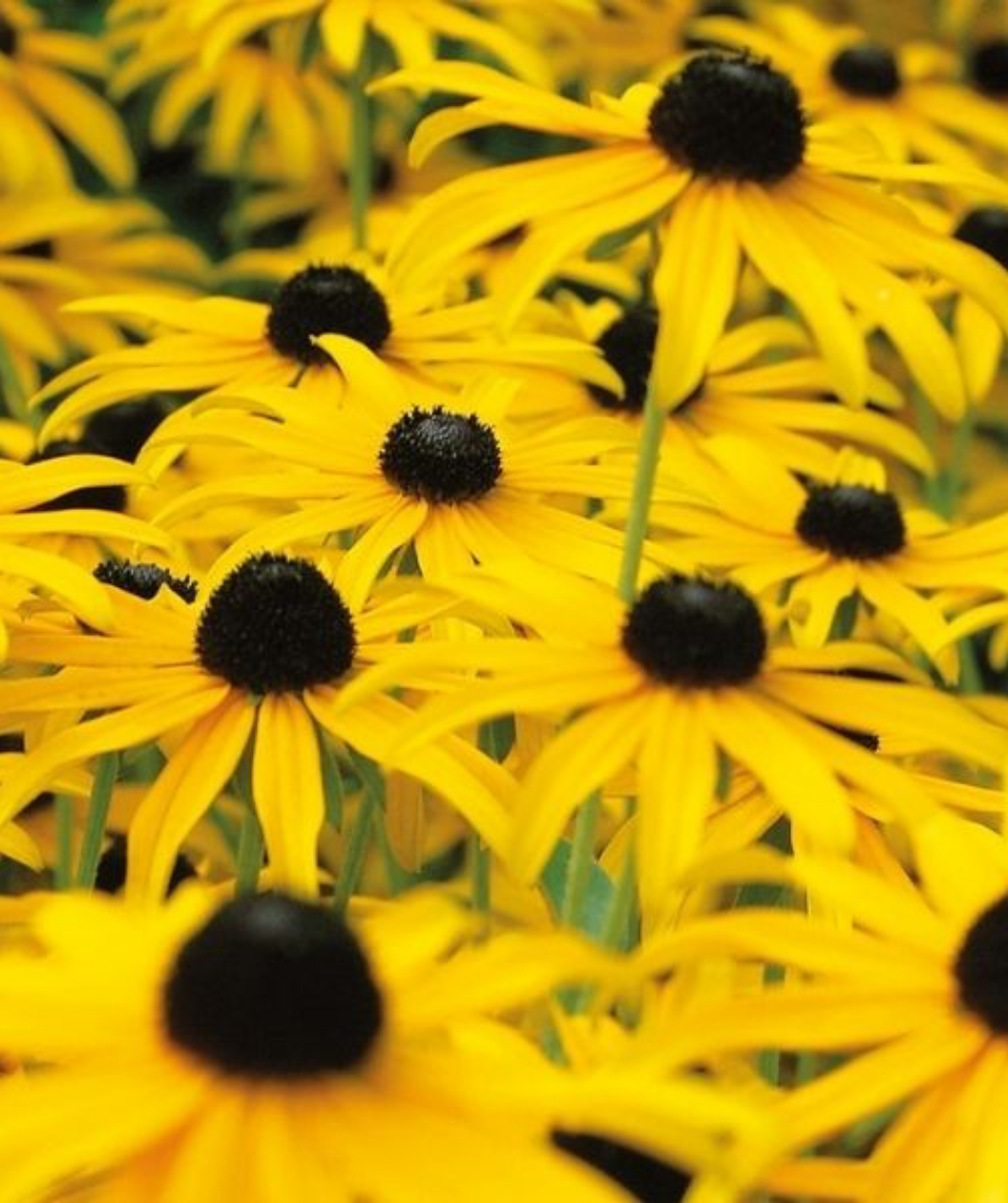FLOURISHING BLACK AND GOLD BLOOMS EVERY YEAR
FEATURES:
- Radiant blooms of gold brighten your landscape from summer to fall
- Dark green foliage has a coarse, almost hairy texture to it
- After the first round of blooms have faded, encourage a repeat performance by shearing them off
- Strong and sturdy stems make the American Gold Rush an excellent cut flower
- The blooms attract pollinators while the seeds attract birds
- Wonderful addition to cottage gardens, perennial beds and pollinator gardens
- Hand Selected, Fresh from the Grower
- Ships in a plant-safe designed box
Growth Facts
- Hardiness Zone: 3-9
- Mature Height: 1.5-2' tall
- Mature Width: 1.5-2' wide
- Exposure: Full Sun
- Spacing: 1.5-2' apart
FLOURISHING BLACK AND GOLD BLOOMS EVERY YEAR
FEATURES:
- Radiant blooms of gold brighten your landscape from summer to fall
- Dark green foliage has a coarse, almost hairy texture to it
- After the first round of blooms have faded, encourage a repeat performance by shearing them off
- Strong and sturdy stems make the American Gold Rush an excellent cut flower
- The blooms attract pollinators while the seeds attract birds
- Wonderful addition to cottage gardens, perennial beds and pollinator gardens
- Hand Selected, Fresh from the Grower
- Ships in a plant-safe designed box
Growth Facts
- Hardiness Zone: 3-9
- Mature Height: 1.5-2' tall
- Mature Width: 1.5-2' wide
- Exposure: Full Sun
- Spacing: 1.5-2' apart
Why plant American Gold Rush Black-Eyed Susan?
You’ll feel as though you struck gold when you discover this valuable Spirit. It’s a new selection that’s bound to be a treasure! American Gold Rush Black-Eyed Susan fills your sunny borders with masses of radiant flowers over a long period in summer. The 24-karat daisies gleam in the sunshine, their mahogany centers making a bold contrast to the solid gold petals. Gold Rush is easy to grow and trouble-free, yet it gives you weeks of glorious color and dapper, clean foliage that remains handsome all season. An excellent return on your investment.
This species of Black-Eyed Susan is a native wildflower that grows throughout much of the eastern U.S., from Massachusetts to Florida and as far west as Wisconsin. It provides nectar and pollen for insects, and for that reason, it’s a must for meadow gardens and for wildlife-friendly spaces of all types. American Gold Rush is a newly developed form of Black-Eyed Susan which is valued for its superior disease resistance. Its leaves stay clean and spot-free, even in hot, humid climates. It was introduced by Wisconsin nurseryman Brent Horvath of Intrinsic Perennials in 2015.
How to use American Gold Rush Black-Eyed Susan in the landscape?
Under favorable conditions, American Gold Rush Black-Eyed Susan will spread, giving you extra blooms that you can use to make wonderful bouquets for the table. The stems are long enough to make perfect cut flowers. Cutting them will encourage new flower buds to form, so more blossoms will follow.
Planting Zones
Hardiness Zone: 3-9
How To Plant American Gold Rush Black-Eyed Susan
American Gold Rush is an adaptable, easy-going Spirit, but does best in a full-sun position in rich but well-drained soil. Water it regularly—about once a week if there’s no rain. The bloom period may be extended by diligent deadheading (trimming the spent flowers off). You may want to leave the end-of-season seed heads standing over the winter for visual interest. Cut all dead stems and foliage back before growth resumes in spring. Black-Eyed Susans love heat and may be slow to get started in the spring.
How To Water
Water twice weekly for the first 3-5 weeks; then water weekly for the remainder of the year until winter. When you water, water very slowly and very thoroughly. The water needs to reach to the bottom of the root ball and that takes time. Watering needs may be altered due to extreme weather conditions.
How To Fertilize
Incorporate Elements Starter Plant food granular form into the soil when planting. If planting in spring or summer start fertilizing late fall using Elements Starter Plant food granular form on an annual basis each late year. Continue this for three years to get your plant well established.
How To Prune
Each fall, just before winter sets in clean up the previous years foliage and compost it. Be sure your perennials are mulched well for winter protection. Two inches of an organic mulch will do the job. Consider leaving the plant debris in place through the winter and doing your clean up on the weather warms in the spring. While it doesn't make things neat and tidy, the debris provides overwintering protection for insects, their eggs and pupae including our native Viceroy butterfly.





